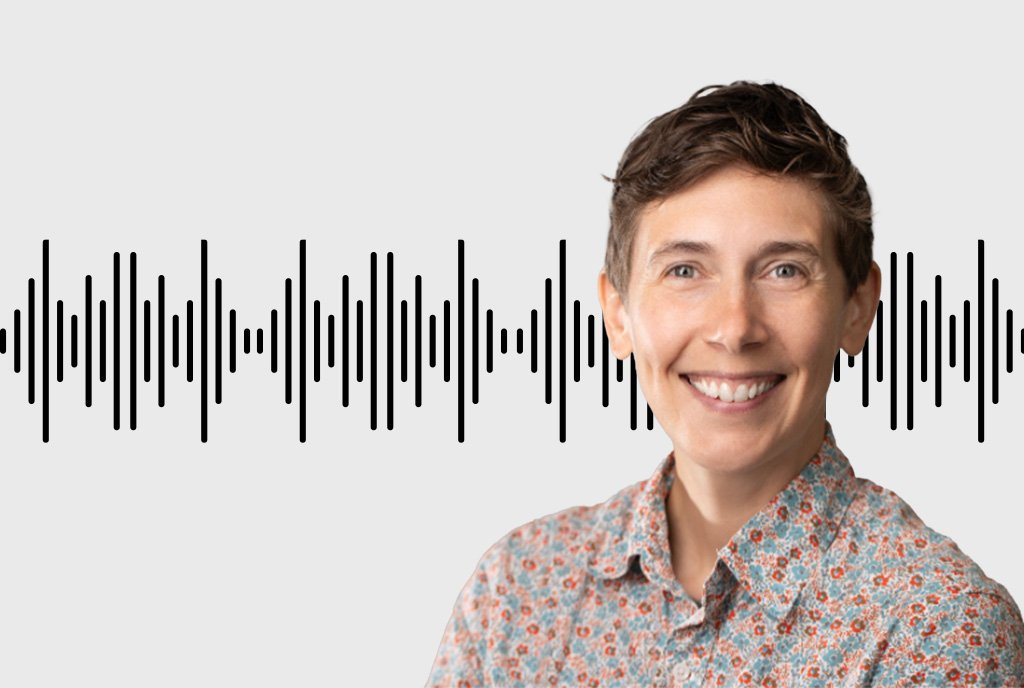
Philanthropic giving for climate mitigation has remained relatively stagnant over the past few years, despite the climate crisis escalating across the globe. Data published by ClimateWorks Foundation found that out of a total $811 billion given globally, only an estimated $7.8 billion to $12.8 billion went to climate mitigation in 2022. And some areas of climate change philanthropy are even more critically underfunded than others.
What’s behind donor hesitancy when it comes to organizations working for climate justice? How can environmental nonprofits instill trust, and what should give donors who care about the climate new reason to hope?
NPQ spoke with Michael Thatcher, president and CEO of Charity Navigator, the largest evaluator of nonprofits in the United States; and Daniel Stein, founder of Giving Green, about climate philanthropy.
This interview has been lightly edited for length and clarity.
Alison Stine: It can be overwhelming for the average donor to not know where to spend their funds and where they would make the most difference.
Michael Thatcher: Ultimately, we’re trying to simplify that. Charity Navigator’s mission is to make impactful giving easier for everyone….We have this idea of a nibble, bite, and a full meal. At the top level, you get the star rating and that would be the nibble—but for many people, that’s sufficient to say: “This is a four-star organization. I know it’s highly rated, I feel confident giving.” And then the bite will give you a little bit more about what goes into that and the four key areas of the rating. In those, we’re looking at accountability and finance. We’re looking at impact and measurement. We’re looking at leadership and adaptability. The last area is culture and community, which is looking at more internal practices, internal equity practices, as well as how the organizations listen to their beneficiaries.
AS: When it comes to climate justice and climate mitigation, how can you tell if an organization is healthy, if they’re fulfilling their mission?
MT: We’re looking at things in a cost-per-outcome approach, so think in more of an effective altruist line of sight where you want your dollars producing the greatest possible impact. And so you’re looking at a known outcome. You’re then determining what the average cost is for that. You’re factoring in a counterfactual, so, what if nothing was done, if there was no intervention? And then you’re able to just balance out how effective is the intervention at achieving the outcome—and what is the actual cost? [Those] are the impact ratings that we have….And in this case, we’re very much looking at things like reduction of carbon emissions and those specific measures.
Daniel Stein: The lens we take is really trying to think about impact per dollar. The climate ecosystem is very confusing, but ultimately, it mostly comes down to greenhouse gases in the atmosphere. If you’re going to put a dollar in, what is the reduction in greenhouse gases that you’re going to get? So, we use this as a framework, but it’s not that easy to just measure it, especially when you’re thinking about: I’m going to give to policy or I’m going to give to a new technology….We have essentially a systematic approach where we use a framework that we call the scale, feasibility, and room for more funding. We’re trying to figure out what are the levers within the system where [we] could achieve this…in terms of a decrease in greenhouse gas emissions?
We use this to try and figure out what specific philanthropic strategies are going to have the highest impact. For instance, a couple of things that have excited us recently are trying to push forward the ecosystem in the next generation of geothermal power. Really thinking about the food system and how to decrease emissions from livestock is another. These are a couple of places where we think, wow, huge emission sources but not that much money going toward them.
“Our ability to promote these organizations has actually shown really dramatic increases in funding.”
Then within that, we try to say, if these are the big high-impact levers, what are some organizations that are working on them, that have a great history of success, that can do a lot with a medium-sized donation and have a clear strategy and a compelling theory of change to get to these final outputs? We do essentially a year’s worth of research to try and home in on these strategies that we think are just right for extra investment and specific organizations that we think are doing a terrific job.
AS: Have you seen more environmental-based nonprofits emerging as we’re realizing the urgency of the issue?
MT: I think it is definitely a space that’s growing. What’s interesting is I’m saying that and then our climate change mitigation list has three charities on it [but] those have gone through this really strenuous evaluation process. We know not only [that] they’re good, they’re great at doing what they’re doing. From our standpoint, it’s a question of bandwidth in terms of our ability to get the coverage….I would say roughly there have got to be close to a thousand charities that are actually working on climate change right now. We haven’t gotten to them yet.
AS: Are there specific areas of climate change mitigation that you think are being underfunded?
MT: The areas that we have in our points of focus are essentially reduction of greenhouse gases [and] alternative energy sources, whether it’s geothermal, nuclear.…I think some of the biggest levers for change are around policy, so how do we change government policy so that there’s promotion of these alternatives? Because the alternatives exist, so a lot of the effort is in actually changing policy. Other project areas would be around nuclear energy, carbon capture, energy access, fusion, and geothermal.
“What is the next thing? What is the next solar panel going to be? And what are the things we can do as a nonprofit ecosystem to make it happen?”What we’ve also noticed—and I think this is a real benefit to our partnership with Giving Green—is that our ability to promote these organizations has actually shown really dramatic increases in funding. We have on the Charity Navigator platform a giving basket that allows you to make a donation directly [to an organization]. Since we launched the climate list and the organizations on it…for Clean Air Task Force, it’s about a 40 percent increase. For the Evergreen Cooperatives, it’s a 144 percent increase. So roughly we’re talking for Clean Air Task Force, it’s close to a hundred thousand dollars that’s gone to them since they were on the list…I think what we would hope for is: how do we return that? How do we increase that even more?
DS: One thing that we think is a big leverage point is…doing technological innovation through advocacy….What are some really big victories in the climate fight so far is one thing I like to use as inspiration. So there’s again a lot of gloom and doom—but we’ve had some amazing victories over the past 20 years, and the two big ones, I think, are the massive decrease in [the] cost of solar panels. That’s caused solar energy to be going from essentially this dream to, in some parts of the world, the cleanest, the cheapest form of energy. The price [of solar panels] has dropped by 98 percent over the past 20 years, and you have a similar thing with batteries. Twenty years ago, people would’ve thought, ‘Batteries, they’re these big heavy things. They’re never really going to be part of the energy ecosystem.’ Battery prices have dropped again by 98 percent, and that’s causing electric bikes, electric cars, [and] battery storage on the grid.
Sign up for our free newsletters
Subscribe to NPQ's newsletters to have our top stories delivered directly to your inbox.
By signing up, you agree to our privacy policy and terms of use, and to receive messages from NPQ and our partners.
One thing I like to think about in terms of things that are underfunded is thinking about what is the next thing? What is the next solar panel going to be? And what are the things we can do as a nonprofit ecosystem to make it happen? Something that makes us excited is funding advocacy for technological progress….A lot of the organizations we promote are thinking about what are the breakthroughs that need to happen and what does government have to do to make the breakthrough happen? What does private sector have to do? And then what is the role of nonprofits? Maybe it’s advocating differently, maybe it’s coordinating the private sector, but it’s these system-level changes that will allow these new markets to come into place.
“If we can do anything, it’s increase trust and let people know these are decent organizations. Your dollars will do what you’re intending them to do.”
That’s the tactic angle. A couple of areas where we think are underfunded in terms of sectors, one is heavy industry. Heavy industry, depending on how you slice it, is something like 30 percent of emissions in the world. It’s so much. It’s a tiny slice of climate philanthropy and, really, overall funding in climate. And another thing is agriculture. It’s again a very big component of emissions. For just livestock is maybe 15 percent of emissions. There’s very little movement in either philanthropy or government to try and decrease emissions because it is very politically sensitive.
AS: I wrote recently about climate fatigue: the idea that people are so overwhelmed and inundated with mostly dire climate news that they’re starting to tune it out and not want to listen or feel like they can take action. Do you see that happening with donors at all?
MT: I would say yes, and in the sense that there’s been a bit of donor fatigue in general, because you have this challenge with, to your point, there are a lot of bad things happening in the world. Climate’s one, but so is what’s happening in the Middle East right now, what’s happening in Ukraine. We keep having climate incidents, whether we have active wildfires, we have mudslides—we’re currently experiencing unusual rain. And I think that’s one part of it.
The other is that there’s been a decline in trust towards institutions, including the nonprofit sector. And so, one of the things that we’re hoping to do through our ratings is really increase that. If we can do anything, it’s increase trust and let people know these are decent organizations. Your dollars will do what you’re intending them to do.
I’d say the last piece with the donor fatigue is also relating to not always having a clear idea of what impact is. So, [to] go back to your question of how do we articulate the impact of a climate charity….Being crisp in how we say that actually helps the donor know that the difference is being made for their $100 donation or a $1000 donation.
AS: Can you give any examples of any groups or projects that you’ve heard about recently that you’re especially excited about?
DS: I can give an example of three organizations that are part of our top recommendations for climate. These are also the ones that are on the Charity Navigator climate change mitigation list because of this great collaboration we have. One is within the geothermal energy space. There’s a lot of excitement now about the idea that there have been incredible advances in the oil and gas industry around fracking—and we climate people think, ‘Oh, fracking: bad.’ But the one good thing about the fracking revolution is it’s drastically decreased the cost to drill deep into the ground. There’s new technology and new expertise….The idea is, what if we could drill really deep like you do for fracking and horizontally like you do for fracking, and find heat or steam that could then be used for power?
There’s a lot of excitement about translating this new technology, and two of the organizations we recommend are doing this. One is called Project Inner Space. They’re building this big map of geothermal resources globally that they think could be unlocked by this new technology, super exciting. Another is Clean Air Task Force. They’re working on other types of advanced geothermal technology, and also doing some really interesting work on parts of the climate ecosystem. Specifically something that we looked at about them is looking at the pathways towards decarbonizing in shipping and aviation, which are some of the hardest problems in the climate space.
AS: I lived in Appalachian Ohio for many years and fracking has been a source of hardship there, so being able to use that technology for something positive is interesting.
DS: If we can make this next-generation geothermal system work and turn the fracking revolution into a win for the energy system, it would be just an amazing turnaround.
AS: How can donors have hope when it comes to climate change?
DS: There are a lot of amazing, positive signals within the climate ecosystem. There are some really interesting graphs, I think it was produced by Our World in Data, that looks at economic growth and then carbon emissions per unit of economic growth in a bunch of countries throughout the world. You can see that in lots of countries, what’s starting to happen is what’s known as the decoupling. If you look at carbon emissions versus economic growth versus GDP for instance, you see them go almost in lockstep for years and years and years. And in the past, let’s say decade, you start to see them diverge. So, there’s this idea that, oh my gosh, we can grow without carbon emissions, and I think that is super inspiring. We see it happening.
Some of these solutions and technology have taken over and beaten the dirty technologies. Solar panels have done it, electric cars have done it. There’s more coming around the bend with induction stoves and heat pumps, and so I think there’s a lot of really positive victories. You can also look at some of the political wins, like the Inflation Reduction Act in the US, which has been this just incredible piece of climate policy that is seeding the whole ecosystem. The Global Methane Pledge from a couple of years ago has been a really big victory on the global scale to reduce methane emissions. So I actually think the last five years have been a pretty exciting time of progress in the climate space.
MT: You’re calling out all these great wins and I’m wondering, how are we telling the story of these wins? Do people even know about it? Because we are hearing too much gloom and doom—and people need some kind of sign of progress or hope to keep going. And I think we’ve got great wins. It’s a question of let’s shout about them. Because you’re right, when you look at all of the alternative energy vehicles now, just everything that’s changed, our world has changed dramatically in the last five years, at least in the US anyway. I don’t know that people are recognizing it or that we’re acknowledging that change.












